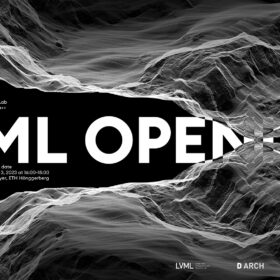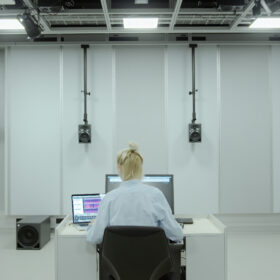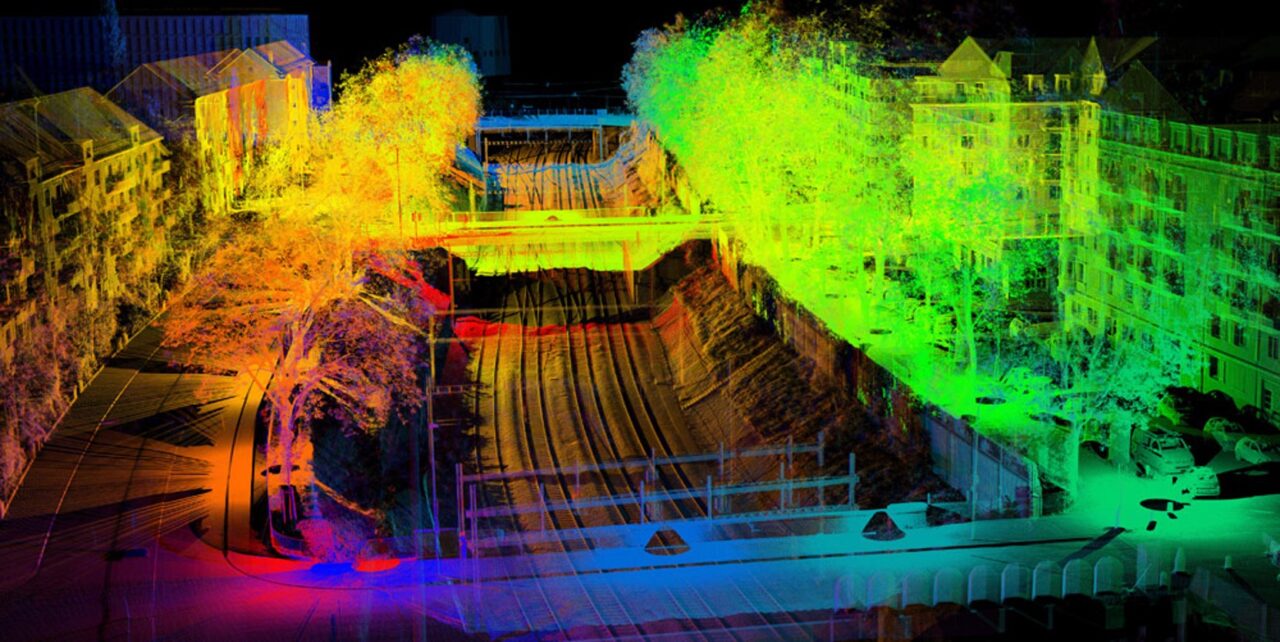
At a time of global anthropogenic paroxysms, initiatives for urban transition are multiplying to ensure quality and resilience of life in cities. In particular, public open space holds immense potential for rapid adaptation to mitigate the severe risks to human health arising from global warming, pollution and pandemics. New methods capable of challenging and reimagining the public open space in cities can help to invent desirable futures.
Evolving imaginaries
The evolving dialogue between urban heritage and prospection has been shaped by people’s imaginaries according to technology, security and the now global economy. In Zürich, major urban transitions in the past converted the medieval moat into today’s Bahnhofstrasse, dismantled the artillery ramparts in favor of urban densification, and installed the first railroad that still divides the city today.
In parallel with these infrastructural transformations, Zürich has also embraced innovative environmental strategies. Improved waste management has paved the way for a new watercourse concept aimed at restoring streams that had been artificialized, channeled, or culverted. As urban challenges like heat islands and biodiversity loss become more pressing, Zürich’s eco-biological infrastructure is gaining recognition in ensuring better and resilient living conditions.
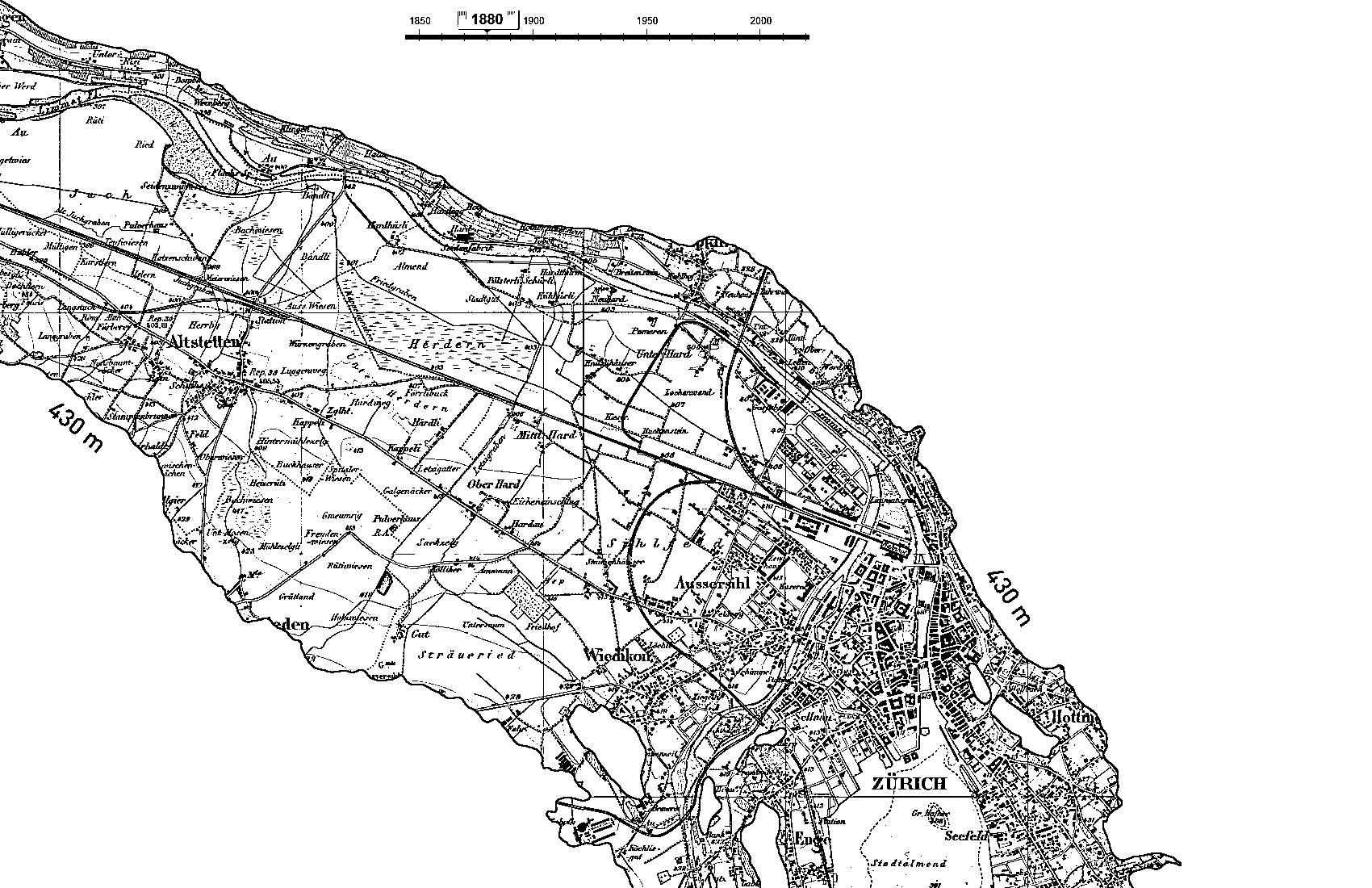
A contextual approach to places
The approach of adapting historical infrastructure while revitalizing natural waterways underscores Zürich’s commitment to dynamic and responsive urban planning. By integrating historical preservation with ecological restoration, the city is crafting a resilient urban landscape that meets contemporary needs while honoring its heritage.
Successive urban transitions created places that people identify with, materializing the Baukultur of contemporary cities. Imagining change today means to work selectively with existing qualities. In the course series Topology, we explore place and identity through a site-specific approach. The approach combines laser-scanning technology, 3D modeling and sonic techniques to analyze the existing setting and to virtualize new perspectives of an urban landscape.
Recomposing space
Using a method of 3D collage to relate heritage with imagination, the course juxtaposes environments to question their status quo. Students investigated this question, identifying reference places that they digitized visually and acoustically and transposed them to cover the Seebahngraben or to reveal the culverted Wolfbach.
By collaging, sound recordings and point clouds, models are recomposed in space to stimulate spatial imagination and explore the interplay of different ambiances and idiosyncratic qualities. The results were virtualized for spatial experience in the Large-scale Virtualization and Modeling Lab (LVML), equipped with a three-dimensional ambisonic sound system and a four-sided visual projection.
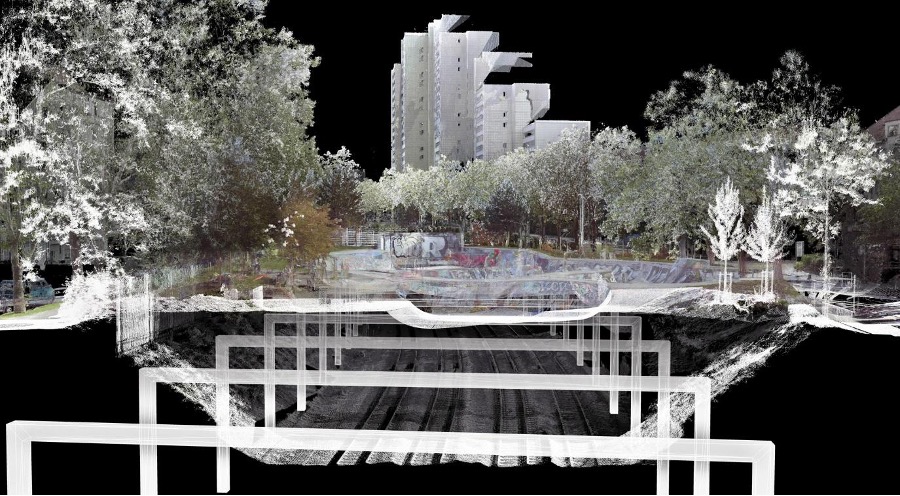
Topology is a course series that investigates places with their many facets. It is offered across the departments D-ARCH and D-BAUG of the ETH Zurich, and is taught by sound designer Fabian Gutscher together with Prof. Dr. Matthias Vollmer and Dr. Philipp Urech, who lead the Large-scale Virtualization and Modeling lab. The LVML was integrated in Design++ in 2023.
